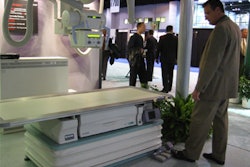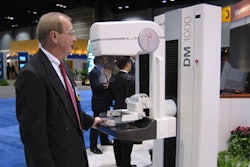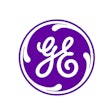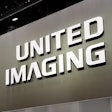The next generation of multislice CT scanners is grabbing headlines at this year's RSNA meeting. Not to be left behind, Philips Medical Systems is entering a 40-slice scanner into the CT race. The Andover, MA, vendor also launched a new family of MRI scanners and a flat-panel digital interventional x-ray system.
Brilliance is a new family of CT scanners that comes in 40-, 10-, and six-slice configurations, and includes two separate models of 16-slice systems. The scanner is the first truly Philips CT product to result from the merger of Philips with Marconi Medical Systems in 2001, according to James Fulton, vice president of global marketing PMC CT for the company.
Brilliance CT 40 features a 40-mm coverage area, 0.4-second gantry rotation, and a reconstruction speed of 40 images per second. The system can conduct a whole-body study in 30 seconds and a lung scan in four seconds, Foley said. The system uses Philips' MRC tube with a heat rating of 8 million heat units (MHU).
The 16-slice Brilliance models are differentiated by reconstruction rates, with the Brilliance CT 16 Power processing 40 images/second and the Brilliance CT 16 clocking in at 10 images/second. The 40-slice and 16 Power scanners will starts shipping in the fall of 2004, while the six-, 10-, and standard 16-slice versions are currently shipping, Foley said. The Brilliance scanners also feature a new workstation environment, called Brilliance Workspace that integrates functions found on both the scanner console and the image processing workstation.
Intera Achieva is a new family of MRI scanners that comes in 3-tesla and 1.5-tesla flavors. The scanners employ the same 1.57-m magnet design used in Philips' previous Intera line, but incorporate new 32-channel data acquisition architecture, called FreeWave, based on the company's SENSE parallel acquisition technology.
Achieva scanners were designed to enable patient monitoring equipment to be plugged into the scanner's patient table, a useful feature for cardiac studies, according to Hans Kleine Schaars, MRI business segment director. An application called MobiFlex can be used in peripheral angiography studies which enables the use of different image acquisition parameters for each exam station, such as SENSE in one station or fluoro triggering in another. Achieva also features an integrated body coil that enables whole-body imaging with no surface coil.
Quasar Dual is a new gradient designed specifically for the 3-tesla Achieva. The gradients feature an amplitude of up to 80 mT/m and a slew rate of 200 T/m/s, and are especially suited for diffusion studies, Schaars said. Other Philips MRI introductions include the introduction of SENSE on the 0.6-tesla Panorama open scanner.
In information technology, the vendor is emphasizing its new alliance with healthcare information systems provider Epic Systems. Signed in early November, the agreement combines Epic’s HIS products with Philips’ medical imaging, PACS, and patient-monitoring technologies. Philips will market healthcare IT products, powered by Epic software, as part of its Vequion family.
Philips hopes to bring an integrated product to market in the fourth quarter of next year. The vendor’s PACS partnership with Sectra is unaffected by the Philips-Epic alliance, said Louis Halperin, director of technology for medical IT.
Release 10 of the firm’s EasyAccess PACS network includes incorporation of lossless compression and MedQuist’s SpeechQ for Radiology speech recognition system, said John Cho, technical marketing manager for Inturis for Radiology. Utilizing a client-based approach, users can also gain access to tools and information from anywhere in the enterprise, while a new integrated Web software module provides access outside the hospital firewall, Philips said.
Other EasyAccess enhancements include improved capabilities for central production of offline media (CD/DVD), integrated e-mail, and more extensive Web distribution offerings, according to the vendor.
Philips’ ViewForum software has also received new clinical applications and x-ray domain features. In addition, Philips PACS workstations can now also be integrated with ViewForum. Work-in-progress technology included a mammography diagnostic workstation. Availability is targeted for the fourth quarter of 2004.
In addition, Philips showcased ProScribe, a tablet PC that provides Wi-Fi-based access to images or clinical data. Developed by Philips sister unit Philips Electronics, ProScribe is based on Microsoft’s CE.Net architecture, Cho said.
In x-ray, new Allura Xper FD family includes the Allura Xper FD 20 and the Allura Xper FD 10 for cardiology. The FD20 includes a 2K x 2K imaging chain with 154-micron pixels incorporated into a 30 x 40-cm detector. The system's gantry features 240° of rotation at rates of up to 55°/second. The Xper systems also include what Philips is calling X-Ray Personalized technology, which enables users to customize workflow using customized settings. The Allura line is being shown as works-in-progress, and the systems have not yet received FDA clearance.
Philips is showing a family of three R/F products at this year’s show, the OmniDiagnost Eleva, the EasyDiagnost Eleva, and the MultiDiagnost Eleva, along with a new Allura line of interventional x-ray systems. The new EasyDiagnost Eleva is a conventional R/F system designed to perform GI, vascular, and standard radiography procedures.
The new OmniDiagost Eleva combines digital, CR, and conventional applications, and can be used in pediatrics, urogenital, angiography/interventional, and traumatology. It is the only Eleva system with integrated tomography.
MultiDiagnost is a multifunctional x-ray system especially suited for vascular and interventional procedures and RF exams. The system features a C-arm design for rotational angiography.
In ultrasound, Philips is showing an upgrade of the product of its acquisition of ATL and Agilent ultrasound companies, the mid-range EnVisor system, introduced in 2002, with six new transducers for small parts and vascular, radiology, ob/gyn, and cardiology. The list price of the upgrade averages around $100,000, depending on configuration.
New controls feature one-button automatic Doppler waveform
analysis for consistent real-time measurement and image optimization to reduce
keystrokes and improve image consistency. Online trending capability is
available with the
Philips also will show the Express 2004 upgrade to its
mid-range HDI 4000 scanner, giving faster 3-D, better resolution, and enhanced
In PET, Philips has upgraded its Gemini PET/CT system with a Brilliance 16 scanner, according to Deepak Malhotra, senior director of PET marketing. The previous version of Gemini employed a two-slice scanner. The 16-slice Gemini should begin shipping in August 2004.
The company is also touting version 2.0 of its Syntegra automated image fusion software, which features better workflow and connectivity. For the company's Forte SPECT cameras, Philips is highlighting JETStream acquisition, which the company says streamlines the imaging process and enables concurrent imaging, with clinicians acquiring multiple image sets simultaneously. As a work-in-progress, Philips is showing its Astonish software, which uses 3-D OSEM reconstruction algorithm to reduce noise artifacts commonly found on filtered-back projection reconstructions.
By Brian Casey, Erik L. Ridley, and Robert Bruce
AuntMinnie.com staff writers
Copyright © 2003 AuntMinnie.com



















